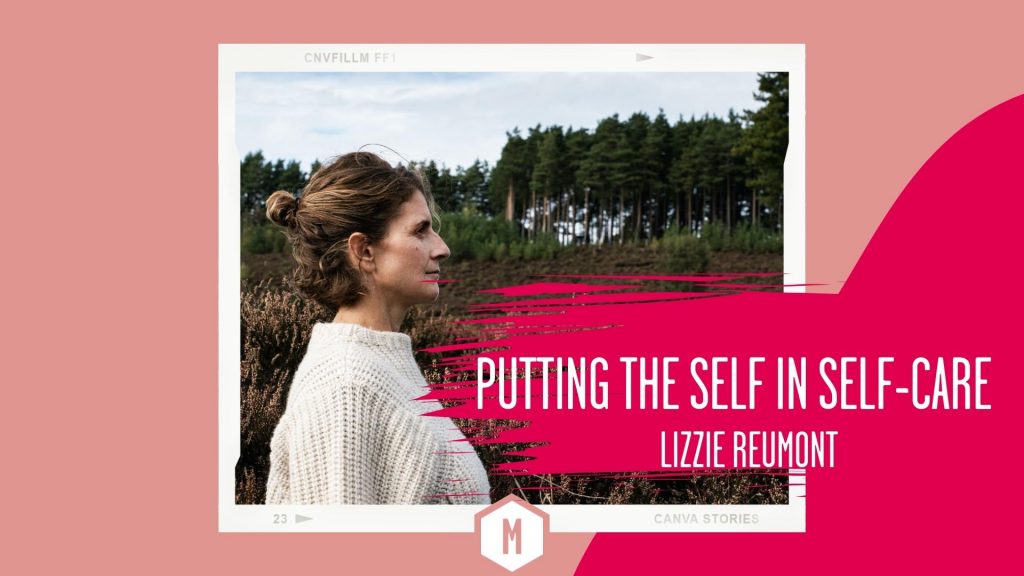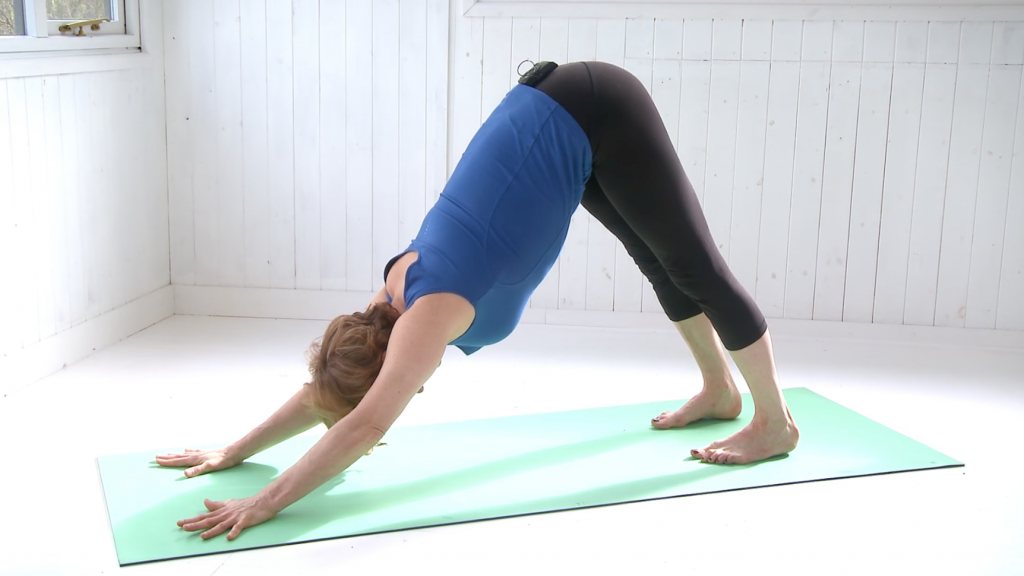
What on earth is ‘self-care’?
Since lockdown began, each morning my ten-year old son and I go for a walk. One of the topics we discuss is the days’ work, which at his school includes a special focus each Friday. When prompted about this Friday’s topic, he rolled his eyes and said, “Ugh, self-care. Everything these days is self-care this, wellbeing that”…
I began to ask questions about what those somewhat ubiquitous terms meant to him. It was evident that while seemingly self-explanatory, defining those words beyond the obvious was somewhat difficult to grasp, and even more challenging to find ways to implement. So, what does wellbeing actually mean, and how does it relate to yoga, a practice that has been widely described as a form of self-care?
How are yoga and self-care related?
Let’s start by looking at the word yoga. The root of the word comes from the Sanskrit root yuk, which means to yoke, or join. The state of yoga is further translated as union–between the duplicitous self, ego-driven and selfish (which I’ll refer to as the small self), and the expansive self, full of potential for love and kindness (which I’ll call the higher Self). The practices of yoga aim to dissolve the small self as we reconnect with our true nature–the higher Self who is not only capable of love and kindness, but who is loving kindness.
Most of us would agree that on the face of it, self-care means caring for the self. The question is, which self are you tending to? For most of us, the small self reigns supreme. Tended to by the ego, this version of self is governed by fear and needs a lot of reassurance. We are taught by society and social conditioning to look after ourselves first and foremost. It’s true, that if we aren’t wholly well within, it is very difficult to try to offer wellness to anyone else (hence the airline’s request to first strap on the oxygen supply yourself). Western culture, guided by multi-national brands and their advertising, has exploited these basic needs to sculpt a consumer proposition that revolves almost entirely around ‘I, me, mine’ mentality.
Defining the ‘Self’
While materially this may yield short term or monetary results, generations have been left spiritually depleted with a deep lack of fulfilment and sense of loneliness as a result. The yogi’s path is one that seeks the root source and along the way, uncovers ultimate truths. This process dismantles the fear that has acted like blinders on our outward vision and showed up as inward big assumptions; the fear that has kept us in a state of separation and judgement, the state of status-quo. By diminishing the ego and instead leaning in towards the higher Self, the sense of wide-openness grows, and we feel more and more comfortable being in our own skin, with out the labels and judgement…for that is who we really are. Surely it is in reconnecting with this notion of higher Self that is what it means to truly Be Well.
To that end, the journey of the yogin is in how to develop this elevated state, which is explained in great detail in the Yoga Sutras of Patañjali, a piece of yogic literature that is sometimes referred to as the How-To Guide of yoga. In chapter two, Patañjali defines the path of yoga as having eight-limbs (also called Aṣṭāṅga, or Raja yoga).
The Yamas and Niyamas
The first two limbs lay the foundation for ethical relationships. The first limb, called the Yamas, are about relationships we have with others. The second limb, the Niyamas, are about the observances we take with ourself. The word yama is translated into restraint, and niyama refers to what is supporting the yamas (ni means under). In very clear terms, how we treat others is supported by how we treat ourselves, and how we govern ourself informs how we relate to others. These two relationships are symbiotic.
Yama, incidentally, has a second meaning other than restraint; it also means ‘twin’. With this in mind, we might think of the yamas as a code for how we would treat our twin, or our own reflection (which is how we see others) until the reflection dissolves. We could see the yamas and niyamas as reflections of each other. Knowing this, it implies that the yamas are embedded to how we regard ourself through others. The ‘twin’ in the meaning of yama can also refer to the relationship between our small self, and higher Self, which merge together through the practice of yoga.
Ahimsa
The first of the yamas is ahiṃsā, meaning non-harming. While the word relates to how we treat others, it actually means much more than that. Mahatma Gandhi suggested we think of ahimsa as ‘a force which is more positive than electricity’. From this vantage point we could translate ahimsa into loving kindness, truth, or the very fabric of love.
As my teacher Sharon Gannon says, “As long as you see ‘others’ as separate from yourself, don’t harm them!” This is because the path of yoga, starting with ahimsa and how we treat others, leads the yogi into experiencing the underlying interconnection between all of life.
So, how do we go about caring for the Self? As it turns out, it costs nothing but time, and is available to anyone at anytime, day or night. Here are three basic steps to put you on the path to being well.
1. Take time for Awareness
In order to care for anyone, one must first understand the person’s needs. Most of us have a basic need to feel safe, to have a sense of belonging and purpose. The problem is, our various inner voices can get confused, and the louder, more superficial voice can drown the other, more truthful voice out. Whilst something deep within might be crying out ‘I’m scared’, or ‘I’m lonely’, the smaller self steps in, and in an act of self-protection may scream, ‘I’m angry’, ‘I’m frustrated’, ‘What did I do to deserve this!’ or the inner critic jumps in to offer ‘I’m rubbish’ as commentary instead. The ego often hijacks our inner voice by being an inner critic or victim rather than allowing our higher Self to tend to the roots of our distress. It is the ego who looks to the outside world to feel better rather than travelling inward to reconnect with the inner voice of truth.
A part of building awareness is learning to stay with the myriad of voices until they settle; until something true to yourself shines through.
The best tool to practice building inner awareness is meditation. This can happen sitting down on your own for a few minutes each day, with an app or with a guide. While a more dynamic movement-based practice such as yoga can also allow one to build upon inner listening, a simple sitting practice is the best way to truly tune in.
2. Naming and Nurturing
Once you have tuned in and given yourself time to explore what is under the initial feeling or sensations that may come up, the next step is giving those feelings a name. It might be that fear is beneath the anxiety you are feeling, or sadness is behind the feeling of loneliness. Whatever it is, being able to name it means that you take time to build an emotional literacty; you take awareness to the next level of being more specific by acknowledging the felt-sense, and leaning in to it.
So much of today’s need for Self-care is due to the avoidance culture we live with, where people truly don’t know how they feel, or why. Avoidance fuels the fire of separation and suffering; in contrast, looking deeply and accepting what you see is yoga. (The second Niyama is saṃtoṣa, meaning self-acceptance).
3. Retreating Inward to Expand Outward
Once you have become aware of what is going on inside and able to capture it with a word or two, the next step is to go a little further inside that sense or feeling. Retreating inward is the act of not running away, but rather, continuing to uncover what is behind the feeling, until it ultimately dissolves. The fifth of the eight-limbs is a practice called Pratyāhāra, which means withdrawing from our senses (prati meaning away or against, and āhāra meaning food, or what is consumed). When we move inward, we move away the things we normally consume. This includes judgements and messages about ourselves coming from the ego to mask the real need; which is usually a form of feeling safe, having a sense of belonging, and understanding our purpose.
Simple Things to practice self-care
Once we have eased the mental fluctuations, we are better equipped to reset the system.
Here’s an exercise:
Spend five minutes imagining your inner most sanctum, light and luminous. See yourself, and begin to build an inner circle of those you feel most closely connected. Visualise all of those people, and then begin to add in the support network of people surrounding your closest allies and family. Add to this the people supporting you and your friends and family that you might not imagine – those people who have made your clothes, packaged your food, the doctors, teachers, shopkeepers, bus drivers…those that have kept your community alive. Pretty soon, you will have moved from an inner world consisting only of yourself, to one supported and surrounded by hundreds, then thousands of others. This practice is a great reminder that we are in a constant relationship of giving and receiving, a fluid and reciprocal existence.
Here’s another practice:
Keep a 5 minute gratitude journal each day. Commit to writing down one or two things from your day that you are truly grateful for. Over time, you may notice a deeper sense of peace, happiness and connectedness. Give it a try!
Finally, taking a bath, walking in nature, cooking a healthy meal for yourself, or sitting down with a good book can work wonders. In fact, any activity that affords you the time to slow down and reconnect inward promotes a sense of wellbeing.
Ultimately, Self-care is Self-Compassion: Acting with Awareness, wishing for the best (for yourself and for others), and a willingness to take action to support this wish.
Lokāḥ Samastāḥ Sukhino Bhavantu
May all beings be peaceful, happy and free, and may our thoughts, words and deeds contribute in some way to that happiness and freedom for all.
Inspired? Try Lizzie’s Class on Anxiety to help you move into a state of greater awareness and calm
Lizzie’s class on Anxiety is a wonderful way to put your self-care into action.

About Lizzie Reumont:
Lizzie Reumont is an advanced certified Jivamukti teacher, Rolfer, Rolf Movement practitioner and coach. Her life’s work is in using these tools to help people to navigate their way through wholistic positive change. You can join Lizzie for meditation on Wednesday evenings 20:15 – 20:30. Check Lizzie’s website for details.





Leave a Reply